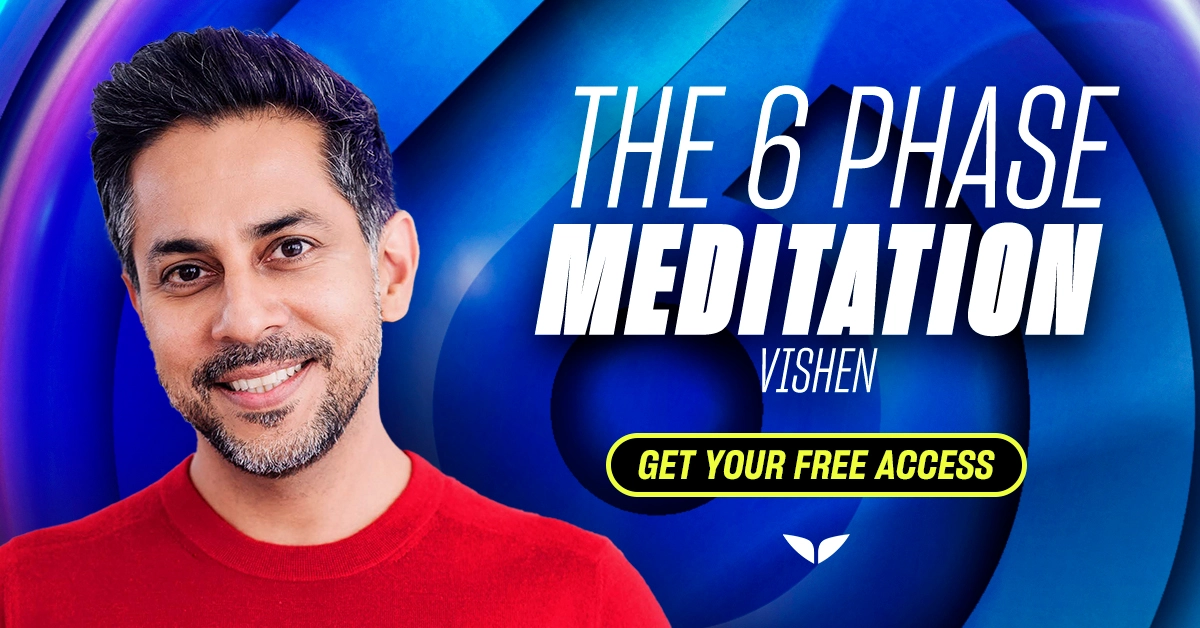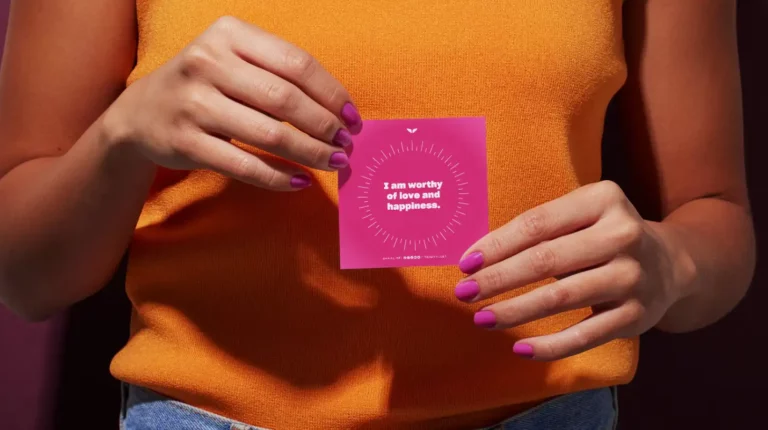The Hawaiians know a thing or two about healing. As a matter of fact, their practices, typically passed down through the generations, are deeply woven into the fabric of their lives.
One such philosophy is ho’oponopono (pronounced ho-opo-nopo-no), a powerful tool that offers a path to inner peace and harmony.
The best part is, it’s understatedly simple. It only takes a few minutes a day. And it might be exactly what you need in this hectic, modern-day life.
What is ho’oponopono?
This ancient Hawaiian practice is one of reconciliation and forgiveness.
But what does ho’oponopono mean exactly? It comes from ho’o (“to make”) and pono (“right”), and with the repetition of pono, it makes it “doubly right.”
So essentially, the “ho’oponopono” meaning in Hawaiian is to “make things right.”
It was traditionally used by kahunas, or spiritual healers, to address disharmony and resolve conflicts within families. They’d repeat the ho’oponopono mantra:
“I’m sorry. Please forgive me. Thank you. I love you.”
This mantra is meant to help acknowledge and release negative emotions, foster forgiveness, and promote love and connectedness. The aim of it? To heal not just the individual but also the entire family unit.
The practice is based on the belief that we are all connected. By healing ourselves, we contribute to the healing of others and the world around us.
“It’s about clearing,” explains Vishen, the founder of Mindvalley. “It’s about peace.”
Nowadays, ho’oponopono is a more personal practice. You can use this meditation to address negative thoughts, emotions, and experiences.
“When you do that,” Vishen adds, “incredible things happen.”
How does ho’oponopono work?
Ho’oponopono’s effectiveness lies in its core principle: taking responsibility for your own reality.
It suggests that everything you, as a human, experience, both positive and negative, is a reflection of your inner world. And when you acknowledge this connection, you can begin to address the root causes of negativity within yourself.
Here’s a breakdown of the key ideas:
- Start by acknowledging your part in any negativity, even if it seems external.
- Ask for forgiveness, both from a higher power or from your own inner self.
- Express gratitude for the opportunity to learn and grow from the experience.
- Send love to heal the negativity within yourself and promote positive transformation.
It’s important to note that ho’oponopono is not a magic solution. However, its focus on self-reflection, forgiveness, and love can have valuable benefits for your well-being.
Benefits
This type of meditation isn’t just about reciting a mantra. There are a number of science-backed goodness that come along with it.
Here are some of the main ho’oponopono prayer benefits:
- Releases negative emotions such as anger, guilt, and resentment.
- Promotes emotional healing and well-being.
- Reduces stress and anxiety.
- Enhances your relationships with others.
- Encourages self-love and acceptance.
- Helps connect with your higher self and the divine.
- Positively impacts on physical health, including improved heart health and a stronger immune system.
Such a simple practice can make lasting positive changes in all aspects of your life when you make it part of your daily routine.

The ho’oponopono prayer and mantra
Each of the four simple phrases in the ho’oponopono meditation has a specific purpose. This helps you address different aspects of healing and forgiveness.
The thing is, they aren’t directed at any external person or situation. Instead, they act as a mantra meditation of sorts that helps you with self-reflection and inner cleansing.
“I’m sorry”
Saying “I’m sorry” goes deeper than just the apology itself. Instead, it’s a way of acknowledging that everything you experience, whether it’s good or bad, consciously or unconsciously, is somehow connected to you.
Look at it this way: Let’s say you had an argument with someone you love. “I’m sorry” is your way of recognizing that your words or actions might have contributed to the tension, even if it wasn’t intentional.
But here’s the thing: It’s not about blaming yourself. Rather, it’s about understanding your impact. It’s about being accountable for your actions.
And saying the five-letter word can help open the door to self-forgiveness and healing.
“Please forgive me”
While “I’m sorry” acknowledges that you did something wrong or caused harm, “Please forgive me” goes a step further. It’s a request for the other person (or even yourself) to let go of any anger or resentment towards you.
For example, think about a time when you judged yourself harshly for a mistake at work. This phrase is your way of asking forgiveness from yourself for being overly critical and from anyone who may have been affected by your actions.
It takes humility and courage, no doubt. But it helps you free yourself from the burden of these negative emotions, allowing you to move forward from the situation with loving-kindness.
“Thank you”
Gratitude is an attitude, as the saying goes—and for good reason. It shifts your focus from what is lacking or wrong to what is abundant and right.
For example, you might reflect on a difficult breakup. When you express gratitude for the lessons learned and the personal growth that came from this experience, you’re likely to see the value in even the toughest moments.
And here’s the thing about gratitude: It can also open you up to receiving more positive experiences in the future. So by being thankful for the healing process, you encourage its continuation.
“I love you”
Three little words. Yet they pack a powerful punch.
Using it in the ho’oponopono meditation is a reminder of the importance of self-love and compassion. Why? Simply because it encourages you to embrace yourself and others with love and kindness.
“I love you” helps build a foundation of self-worth and acceptance, which is essential for lasting emotional health. What’s more, when you love yourself unconditionally, you give yourself permission to do the same for others.
This creates a ripple effect of positivity and harmony, fostering a deeper sense of connection and unity.
How to do ho’oponopono
There are meditation classes out there where you can learn how to do ho’oponopono. However, the concept is pretty simple and straightforward. The great thing is, it can be done anytime, anywhere.
Here are the steps to follow:
- Find a quiet and comfortable place where you won’t be disturbed.
- Take a few deep breaths to center yourself and relax your mind.
- Begin by repeating the four key phrases silently or aloud:
- “I’m sorry.” Acknowledge your role in creating the situation.
- “Please forgive me.” Release any feelings of guilt or blame, both towards yourself and others.
- “Thank you.” Express gratitude for the opportunity to learn and grow from the experience.
- “I love you.” Send love and acceptance towards yourself and the situation.
- As you repeat each phrase, focus on its meaning and the emotions it evokes. Allow yourself to fully experience the feelings that come.
- Continue repeating the phrases for as long as you feel necessary. There’s no set time limit, so trust your intuition and go with the flow.
When you’re ready, take a few more deep breaths and slowly open your eyes. Then, take a moment to reflect on the experience and any insights or emotions that came up.
Expand your consciousness
Ho’onopono is a great start to your meditation practice. But if you’re looking to explore meditation practices that complement it, Mindvalley offers a free program called the 6 Phase Meditation Quest.
Led by Vishen, this revolutionary approach transforms how you think, perform, grow, and heal. It’s so incredibly effective that it has become a favorite among millions worldwide, including US Open champions and Grammy Award-winning artists.
The seven-day, 20-minute-a-day online journey guides you through practices like gratitude, forgiveness, and visualization—all of which align beautifully with the core principles of ho’oponopono.
As Vishen says, “The more you meditate, the easier it becomes to meditate.” And it all starts with six simple phases.
Welcome in.












